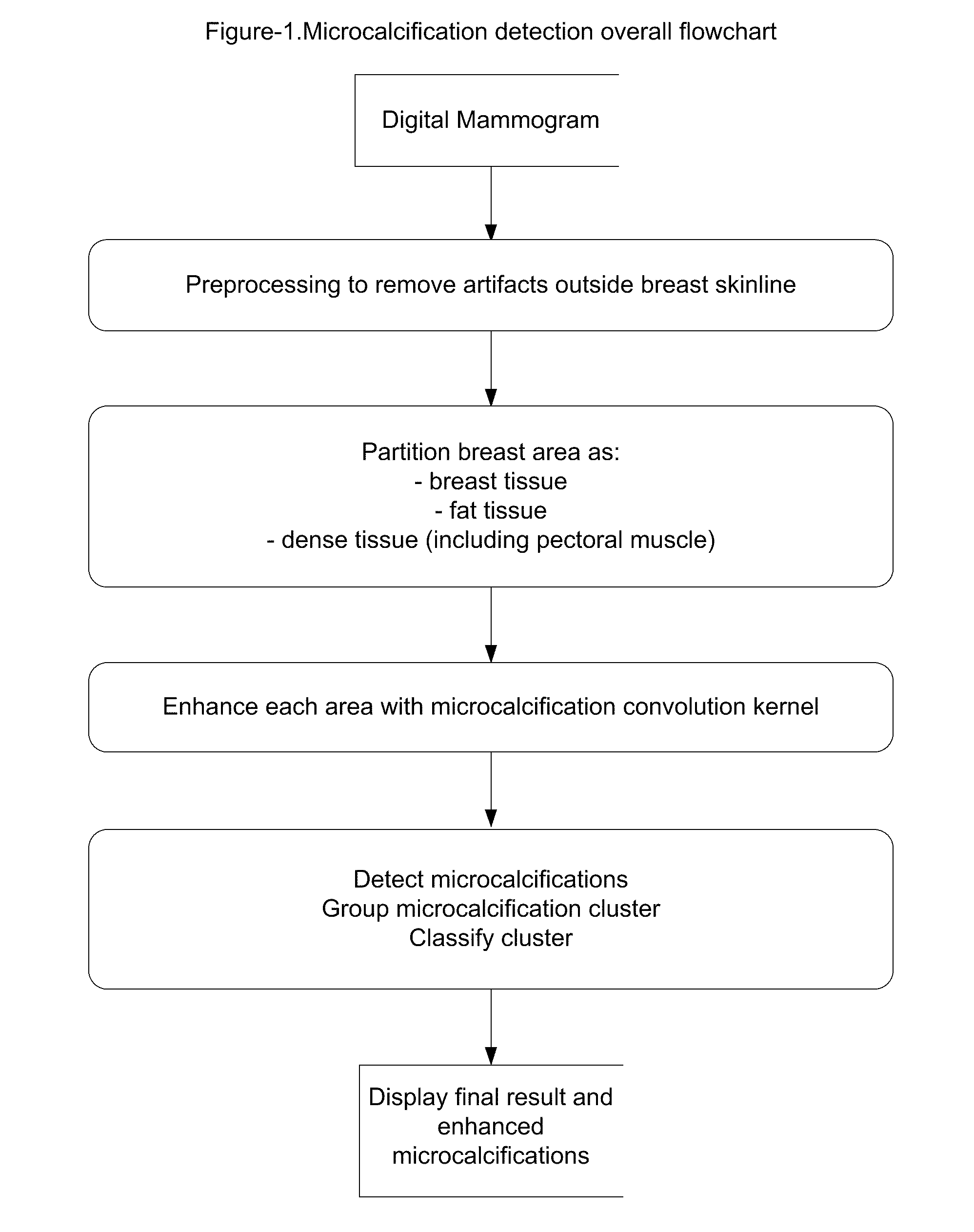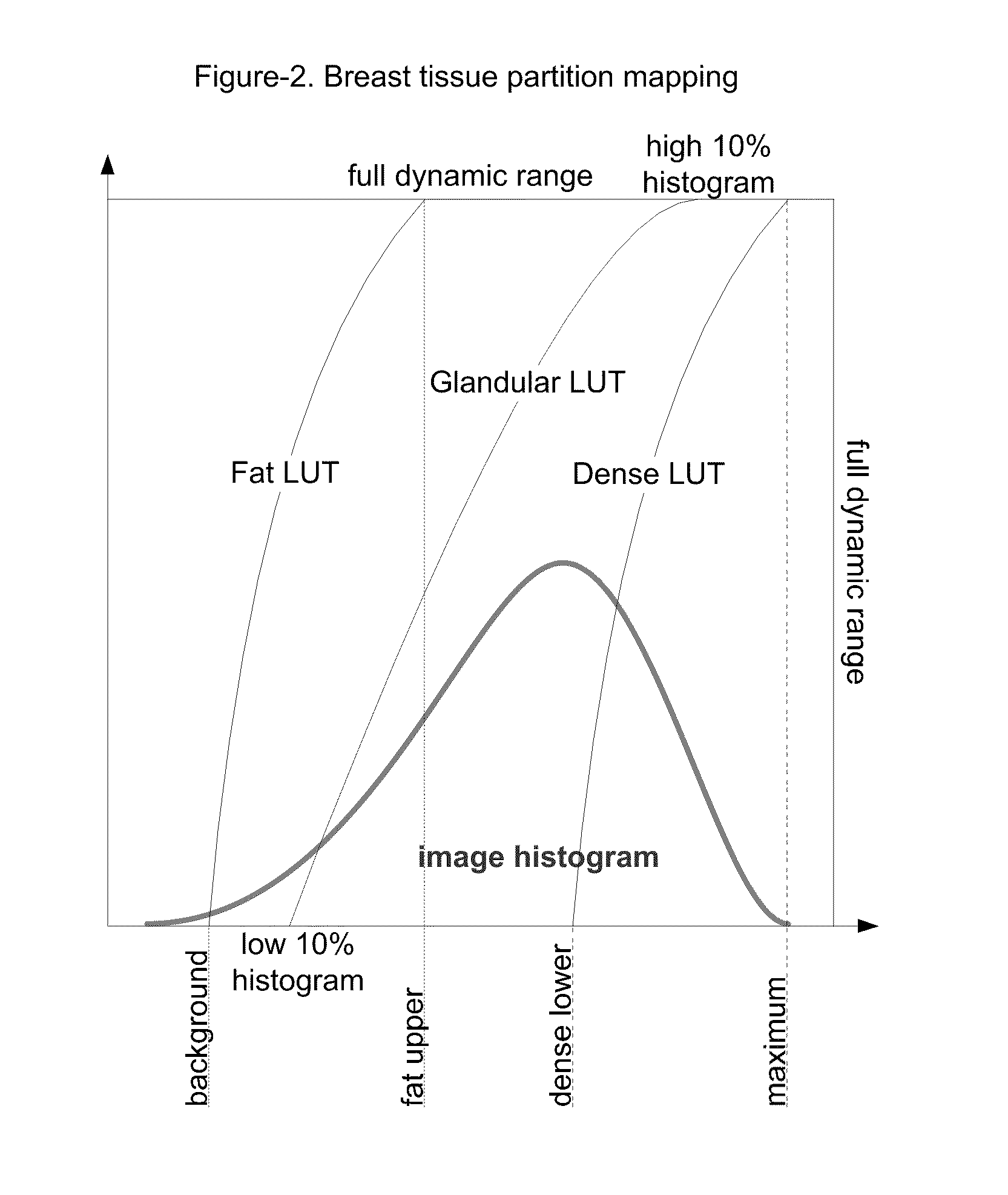Microcalcification enhancement from digital mammograms
a digital mammogram and microcalcification technology, applied in image enhancement, image analysis, instruments, etc., can solve the problems of low accuracy, low accuracy, and limited number of orientations, and achieve the effect of enhancing microcalcifications
- Summary
- Abstract
- Description
- Claims
- Application Information
AI Technical Summary
Benefits of technology
Problems solved by technology
Method used
Image
Examples
Embodiment Construction
[0015] Early detection of breast cancer is the goal of mammography screening. With the rapid transition from film to digital acquisition and reading, more radiologists can benefit from advanced image processing and computational intelligence techniques when they are applied to this task. The method and system in this invention will be used as either a “second read” or a “concurrent read” tool for digital mammography screening—ultimately, will be used as a “communicative read” tool for radiologists. In this task, enhancement of microcalcifications is the initial step for a CAD server or a diagnosis review workstation. As shown in FIG. 1, the microcalcification detection system includes steps of preprocessing to remove artifacts outside breast tissue area; partitioning the breast area as breast glandular tissue area, fat tissue area and dense tissue area which each area is in a sub-range of full pixel dynamic range; remapping and enhancing each area using a filter with a convolution k...
PUM
 Login to View More
Login to View More Abstract
Description
Claims
Application Information
 Login to View More
Login to View More - R&D
- Intellectual Property
- Life Sciences
- Materials
- Tech Scout
- Unparalleled Data Quality
- Higher Quality Content
- 60% Fewer Hallucinations
Browse by: Latest US Patents, China's latest patents, Technical Efficacy Thesaurus, Application Domain, Technology Topic, Popular Technical Reports.
© 2025 PatSnap. All rights reserved.Legal|Privacy policy|Modern Slavery Act Transparency Statement|Sitemap|About US| Contact US: help@patsnap.com



